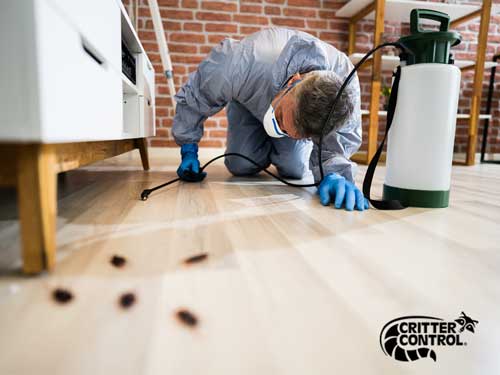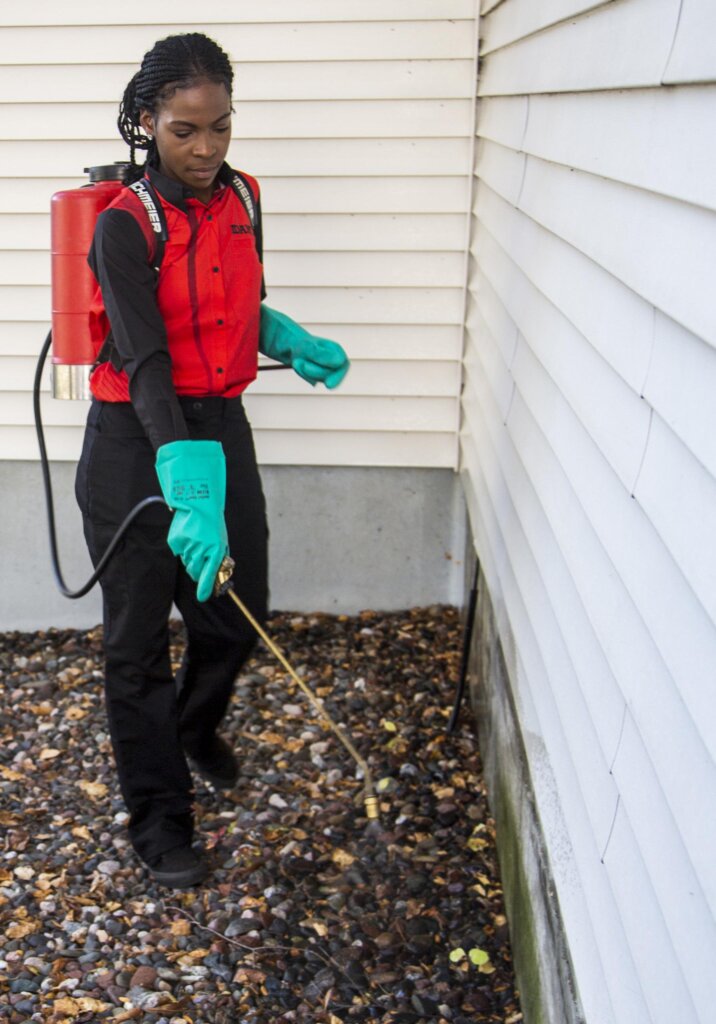High Quality A1 Pest Control Services Charlotte - Protect Your Home
Wiki Article
Bed Bug Treatment Malfunction: Comparing Chemical Vs. Non-Chemical Solutions
In the realm of bug control, specifically when taking care of the relentless problem of bed bugs, the selection in between chemical and non-chemical treatment services can be an essential one. Both strategies offer unique benefits and disadvantages, influencing factors such as performance, security factors to consider, and total cost. By examining the nuanced details of each approach, a clearer understanding of which path to go after in dealing with a bed pest invasion can be attained.Performance of Chemical Therapies
Chemical therapies for bed insect invasions have actually been widely acknowledged for their fast and potent effectiveness in getting rid of these parasites. When considering the performance of chemical therapies, it is vital to understand that they can give a complete and fast option to a bed bug trouble. Professional exterminators typically count on insecticides to target bed pests at numerous stages of their life cycle, consisting of grownups, fairies, and eggs. These chemicals commonly function by interrupting the bed insects' anxious system, causing paralysis and ultimate fatality.In addition, chemical treatments have the benefit of providing recurring effects, implying that they can continue to get rid of bed bugs also after the initial application. This residual activity is specifically helpful in combating any possible re-infestations. Additionally, the quick activity of chemical therapies can bring relief to people facing extreme bed bug infestations, allowing them to gain back control of their home swiftly.
Safety Worry About Chemical Solutions
One essential aspect that needs cautious consideration when utilizing chemical remedies for bed bug therapy is making sure the safety of owners and the atmosphere. Exposure to specific chemicals utilized in bed bug therapies can lead to respiratory problems, skin inflammation, or various other damaging reactions, particularly in people with pre-existing conditions or level of sensitivities.Moreover, the environmental impact of chemical services is another considerable factor to consider. Some pesticides utilized in bed insect treatments may be hazardous to valuable pests, wild animals, and environments if they leach right into the dirt or water supply. It is important to use chemical therapies deliberately, following safety guidelines, and taking into consideration less harmful choices to minimize these risks and make sure the risk-free and efficient management of bed bug problems.
Benefits of Non-Chemical Strategies
Thinking about the prospective safety and security problems and environmental influence connected with chemical options for bed bug treatment, exploring non-chemical techniques provides an encouraging alternative with several distinctive advantages. Non-chemical therapies are ecologically friendly, as they do not add to air or water pollution, making them a lasting selection for insect control.Furthermore, non-chemical solutions can be effective in targeting bed insects, consisting of hard-to-reach locations where chemical treatments may not pass through. Methods such as warmth therapy, vacuuming, steam cleaning, and mattress encasements provide comprehensive elimination without using hazardous chemicals. Furthermore, non-chemical approaches can be less disruptive, requiring very little preparation and enabling for quicker reentry redirected here right into dealt with locations. On the whole, going with non-chemical bed insect therapy methods not only focuses on safety and environmental management but additionally makes certain reliable and detailed parasite control.
Limitations of Non-Chemical Treatments

Additionally, non-chemical therapies often call for numerous applications to attain effective removal. This can be lengthy and might not constantly ensure total elimination of all bed bugs and their eggs, especially in surprise or hard-to-reach places.
Additionally, the success of non-chemical treatments greatly relies upon appropriate implementation and thoroughness, which can be challenging for people without expert expertise. Insufficient application of non-chemical methods might cause incomplete removal, bring about relentless invasions and the requirement for extra treatments.
As a result, while non-chemical treatments have their advantages, it is necessary to acknowledge these limitations and consider them when establishing the most reliable strategy for handling bed insect infestations.
Cost Contrast: Chemical Vs. Non-Chemical Options
Given the limitations related to non-chemical treatments, an essential aspect to evaluate in the context of bed pest management is the price contrast between chemical and non-chemical choices. Chemical treatments typically involve the application of pesticides by specialists, which can range from $250 to $900 per area, depending upon the severity of the invasion and the dimension of the area to Check Out Your URL be treated. On the other hand, non-chemical treatments like heat therapy or heavy steam can be more pricey, with prices varying from $1,000 to $6,000 for an entire home. While the first price of chemical therapies might appear lower, numerous therapies may be needed to fully get rid of the infestation, possibly increasing the overall cost. On the various other hand, non-chemical alternatives may offer an extra environmentally friendly and lasting remedy, although they can be cost-prohibitive for some people. Ultimately, when taking into consideration the price of bed insect treatment choices, it is very important to weigh the upfront expenditures versus the effectiveness and long-term sustainability of the picked approach. best termite prevention treatmentVerdict

Taking into consideration the prospective safety issues and environmental effect associated with chemical services for bed bug therapy, discovering non-chemical strategies offers an encouraging option with a number of distinct benefits.Provided the constraints associated with non-chemical treatments, an important aspect to assess in the context of bed bug administration is the price comparison in between chemical and non-chemical alternatives. In contrast, non-chemical therapies like heat treatment or steam can be a lot more costly, with prices ranging from $1,000 to $6,000 for an entire home. While the first expense of chemical treatments might seem reduced, numerous treatments might be required to totally eliminate the invasion, potentially raising the overall expense.In verdict, when contrasting chemical and non-chemical bed insect therapy options, it is necessary to consider efficiency, safety and security, advantages, restrictions, and expense.
Report this wiki page